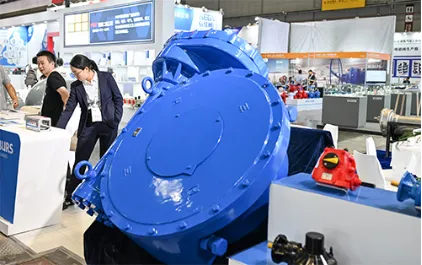Mobile:+86-311-808-126-83
Email:info@ydcastings.com
Overview of Trash Pump Impellers and Their Applications in Water Management
Understanding Trash Pump Impellers Design, Function, and Applications
Trash pumps are essential tools in various industries, especially during flooding or emergencies when rapid water removal is critical. One of the key components that contribute to the efficacy of trash pumps is the impeller. Understanding the design and function of trash pump impellers can provide insight into their performance and suitability for different applications.
What is a Trash Pump Impeller?
An impeller is a rotating component of a pump that transfers energy from the motor to the fluid being pumped. In trash pumps, the impeller is specifically designed to handle fluids containing solids and debris, such as leaves, mud, or waste. Unlike standard pumps, which may be damaged by such materials, trash pump impellers are constructed to withstand abrasive conditions and keep the pump functionality intact.
Design Characteristics
The design of trash pump impellers differs significantly from that of standard impellers. One of the primary design features is the larger passageways created to allow solids to flow through without clogging the pump. Trash pump impellers typically exhibit an open or semi-open configuration, allowing for greater flexibility in handling various debris sizes while minimizing the risk of blockages.
Moreover, the materials used for trash pump impellers are often more robust to resist wear and corrosion. Impellers made from high-chrome stainless steel, for instance, are commonly used for their durability and resistance to damage from abrasive particles. Additionally, many manufacturers offer impellers with adaptive designs that enable them to work efficiently in a variety of demanding conditions.
Functionality in Operation
trash pump impeller

When a trash pump is operational, the motor drives the impeller, creating a centrifugal force that pushes the fluid (along with solids) through the pump. As the impeller rotates, the fluid is drawn in through the pump's suction side and expelled through the discharge side. The efficiency of an impeller can significantly impact the pump's overall performance, influencing flow rate, pressure, and the ability to manage solids.
The impeller's ability to separate solids from the liquid can vary with design. Some advanced impeller designs incorporate features to enhance the separation process, ensuring that the solids are effectively moved through the pump without settling or causing blockages. This capability is critical during emergency situations where debris can quickly clog pumps intended for rapid water removal.
Applications and Importance
Trash pumps with effective impellers are widely used in a range of applications, including construction sites, flood control operations, agricultural irrigation, and wastewater management. Their robustness makes them suitable for temporary applications where water must be removed quickly, such as in the aftermath of heavy rainfall or sudden flooding.
In the construction industry, for instance, trash pumps help ensure that work sites remain operational even during heavy rains. Similarly, municipalities often rely on these pumps for effective wastewater management, allowing them to handle a variety of debris and maintain sanitary conditions.
Conclusion
The impeller is a crucial component in the functionality of trash pumps, crucial for ensuring reliable performance in challenging conditions. With their specialized design, trash pump impellers facilitate the efficient movement of fluids containing solids, making them indispensable tools in various industries. Understanding the function and importance of these impellers not only highlights the critical role they play but also emphasizes the need for continuous improvement in their design and materials to meet the ever-evolving demands of different applications. Whether for emergency flood response or routine construction work, reliable trash pumps equipped with powerful impellers will remain essential in managing water effectively and safely.
-
Why Is Choosing the Right Motor Housing Critical for Engine Performance?NewsJul.18,2025
-
Which Impeller Types Best Optimize Your Pump’s Efficiency?NewsJul.18,2025
-
Optimize Maintenance Efficiency with Durable Oil Catch SolutionsNewsJul.18,2025
-
Maximize Pump Performance with Precision-Engineered ComponentsNewsJul.18,2025
-
Elevate Industrial Flow Systems with Precision-Engineered ComponentsNewsJul.18,2025
-
Boost Durability and Functionality with Precision Power CastingsNewsJul.18,2025











